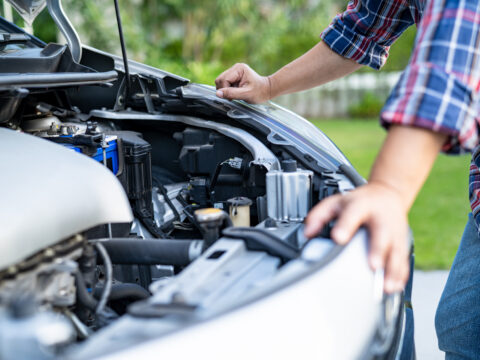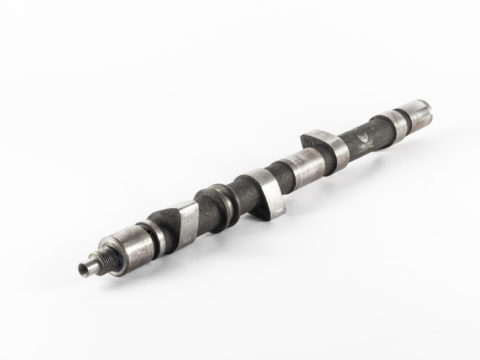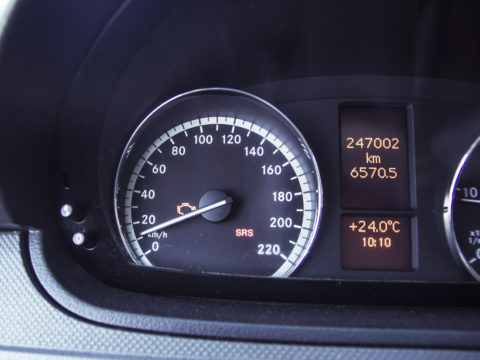If you have a bad knock sensor, it is important that this is checked and replaced as soon as possible, so you don’t cause damage to your engine.
This guide will give you all the information you need about what knock sensors are, why they should be replaced, and how to do it.

Contents
What does a knock sensor do?
Cars will typically have between 60 and 100 sensors in them to ensure there are no faults and they can run to their full potential.
The job of the knock sensor is to pick up on sounds or vibrations in the engine. This information is transferred to the engine control unit to manage the issue or alert the vehicle’s owner.
Knock sensor working principle
Knock sensors use the piezoelectric effect to measure movement or sound in the engine. Piezoelectric ceramics are used to covert this into electrical signals that can then be transmitted to the engine control unit.
The information is then used to determine whether there are any engine problems. The check engine light would be illuminated to notify the car owner of any issue.
Where is the knock sensor located?
Knock sensors can be located in a few locations depending on the make and model of the vehicle. The best way to locate your car’s knock sensor is by referring to the user manual.
They will most likely be located on the engine block, intake manifold, or cylinder head.
How long does a knock sensor last?
Knock sensors will typically not have to be replaced until after 150,000 miles unless there is a problem with the sensor.
Bad knock sensor symptoms to look out for include;
- The check engine light illuminating
- Knocking sounds coming from the engine
- A decrease in your acceleration
- Decreased engine power
- Declining fuel economy
Why replace your knock sensor?
If you have noticed some of the symptoms of a bad knock sensor when driving, taking your car to a mechanic to be checked over is advised.
Check Engine Light
The check engine light coming on means that one of your car’s sensors has picked up a fault. Taking the car to a mechanic to check will help you diagnose what the issue is.
Knocking Sounds
A bad knock sensor will be feeding the wrong information to your engine control unit. This can cause loud, thumping noise to come from your engine, and these sounds will progressively get louder if the problem is not resolved.
This is because the air and fuel mixture is igniting in the cylinder instead of the combustion point.
A decrease in your acceleration
If the engine control unit is not receiving the correct information, it will affect the performance of your car. One symptom of this is poor acceleration.
Decreased engine power
The poor performance will also impact your top speed and torque when the ECU does not receive the correct information from the sensor.
Declining fuel economy
If the ECU receives erroneous information or the knock sensor has failed completely, it may revert to its default values. This means the car will not run as efficiently as it could, leading to fuel wastage.

How to check if a knock sensor is bad
Checking if you have a faulty knock sensor is relatively straightforward if you have a multimeter. The following steps explain how you can check your vehicle’s sensor.
- Step 1 – The vehicle’s engine should be off, the parking brake should be engaged, and you should be parked on a level surface.
- Step 2 – By checking the vehicle’s manual, you will be able to locate the sensor on your engine.
- Step 3 – After locating the sensor, pull the base of the wire harness attached to it to disconnect it from the sensor.
- Step 4 – Clip your multimeter to a ground point in the sensor. If there is no continuity or the reading does not exceed 10 ohms, the sensor should be replaced.
How to replace a knock sensor
Replacing a faulty knock sensor is a relatively straightforward task. Follow our simple step-by-step guide below to replace yours.
- Step 1 – Like when checking your knock sensor, you should ensure the vehicle’s engine is off, the parking brake is engaged, and the car is parked on a level surface.
- Step 2 – If the car has been used recently, open the bonnet and allow the engine to cool.
- Step 3 – Use the user manual to locate the sensor. This will usually be near the intake manifold on the engine block, and attached to the sensor will be a wiring harness. Use your replacement sensor to compare when looking for the sensor in your vehicle.
- Step 4 – After locating the sensor, assess whether any other engine components will hinder your access. If there are, remove these. One great way to remember where and how to reattach these is by taking photos with your phone or camera.
- Step 5 – Now that you have access to the sensor, remove the wiring harness by gently squeezing the tabs holding it in place and moving it to one side.
- Step 6 – Use an adjustable wrench to remove the sensor by turning it counterclockwise and pulling it out by hand.
- Step 7 – Install the new knock sensor and tighten it in place by going clockwise with your adjustable wrench. Reattach the wiring harness to the new sensor.
- Step 8 – Replace and reattach any components moved by referring to the pictures you took when removing them.
How much does a knock sensor replacement cost?
Knock sensors will differ in cost depending on the make and model of the vehicle and the component itself. You could expect to pay anywhere from $20 to $200 for a new sensor.
You will save money on the knock sensor replacement cost by installing this yourself, but not everyone will have the confidence or expertise to do this. If you are going to ask your mechanic to do this, labor costs will be anywhere from $50 to $350.
Is a knock sensor worth replacing?
If you notice any symptoms that there might be issues with your knock sensor, getting it tested is essential. If a fault is diagnosed, you should replace the bad knock sensor as soon as possible.
Not replacing the bad knock sensor and continuing to drive could lead to further complications and cause damage to your engine. This will lead to an expensive trip to your mechanic to repair more issues than just the sensor.
FAQs
Can I drive without the knock sensor?
The car will be able to be driven without a knock sensor, but it is not advised. Not having a working knock sensor will mean the engine control unit will not be receiving the information it needs to manage the engine and maintain maximum efficiency.
Not having a working knock sensor will also mean you will have no way of knowing if an engine knock is developing. An efficient engine knock sensor will allow you to take the vehicle to a mechanic if the engine light comes on and carry out any work necessary to resolve the issue.
Can you replace a knock sensor yourself?
It is possible to replace an engine knock sensor yourself by following the steps provided above. It is advised that you have some experience with vehicle maintenance to ensure the sensor is installed correctly.
If you have any concerns, you can check the sensor after installation by following the advice further up in this article, or you can take it to a mechanic who will be able to check it quickly.
Alternatively, if you don’t feel you have the experience to carry out the work, taking it to your mechanic will ensure the sensor is fitted, and your engine receives all the information it needs to run efficiently.
What happens if you don’t replace the knock sensor?
Your engine sensor is there to detect sounds or vibrations that can indicate problems. The engine control unit uses the information it gets from sensors like this to control the ignition timing so it can maximize fuel mileage and engine power.
A sensor that doesn’t work will not be able to detect these sounds or vibrations, and the ECU will have to revert to default values, impacting your fuel efficiency and the performance of the vehicle.
Another problem is that the sensor won’t be able to detect pinging in the engine. Pinging in the engine is when the air and fuel mixture ignites incorrectly. This can damage the internal components of the engine and needs to be rectified as quickly as possible.
Why is a replaced knock sensor still getting code?
After replacing a knock sensor, it is possible that the ECU still receives codes that indicate certain problems. After installation, you should clear the diagnostic trouble codes using a scan tool.
The adaptive learning memory of the ECU can also be reset, so the system works from a blank slate.
You can also check the wiring to ensure there are no loose or broken wires on the new sensor.














